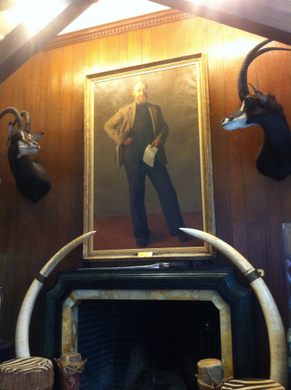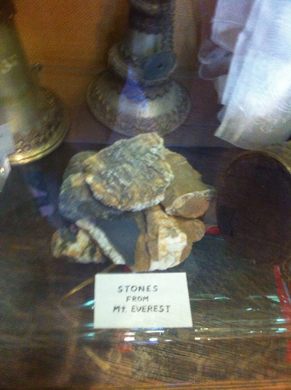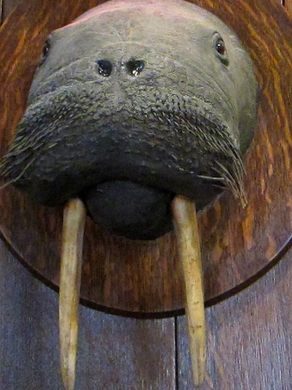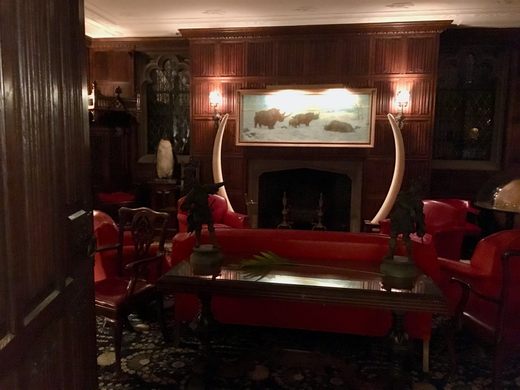Explorers Club Headquarters
A treasure trove of artifacts, books, and artwork from the "golden age" of exploration.
Behind impressive heavy doors and ornate turn-of-the-century stained glass windows lies the Explorers Club headquarters on East 70th Street.
Founded in 1904 by seven leading polar explorers of the era, the Explorers Club fosters the scientific exploration of land, sea, air and space. The 1910 Jacobean revival mansion was originally built for Stephen Clark, grandson of the co-founder of the Singer Sewing Machine Company. The Explorers Club purchased the building from the Clark family in 1960 after Stephen’s death. It became the international headquarters in 1965. Prior to this, they had several locations in New York City.
It is known as the Lowell Thomas building, named after the famed writer, broadcaster and Explorers Club member best known for making Lawrence of Arabia famous.
A century’s worth of exploration treasures fill the floors. The ground floor member lounge houses a few of their polar artifacts. On your way up to the second floor, you won’t be able to miss the giant globe used by Thor Heyerdahl to plan his famous Kon-Tiki expedition.
Percy, the polar bear, greets you on the second floor. As you head into the library, you will see The Rescue of Greeley, painted within hours of their rescue in 1884. The library holds a tiny fraction of the 13,000 books that make up the research and archives collection.
All lectures and events are held in the Clark room. The walls proudly display a few of the retired expedition flags from historic explorations. A sled from the 1909 North Pole expedition and an extremely rare set of double elephant tusks from the Congo can also be found here.
The uppermost floor is home to the research archives, holding the club’s impressive collection of 13,000 books, 1,000 museum objects, 5,000 maps and 500 films.
The Gallery on the top floor is the room everyone wants to see. In the early days of the Explorers Club when travel was difficult and field photography was relatively new, hunting and taxidermy were thought to be the best way to preserve animals for education and research. Here you will see taxidermied animals from many decades past. Objects from the far corners of the world, including a narwhal tusk, wooly mammoth tusk (ask about the famous 1951 Explorers Club dinner), and the famous yeti scalp.
Know Before You Go
Visitors are welcome during opening hours. Group tours can be scheduled by contacting reservations. Regular talks with exploration greats are held in the Clark Room from September - June.









































Follow us on Twitter to get the latest on the world's hidden wonders.
Like us on Facebook to get the latest on the world's hidden wonders.
Follow us on Twitter Like us on Facebook